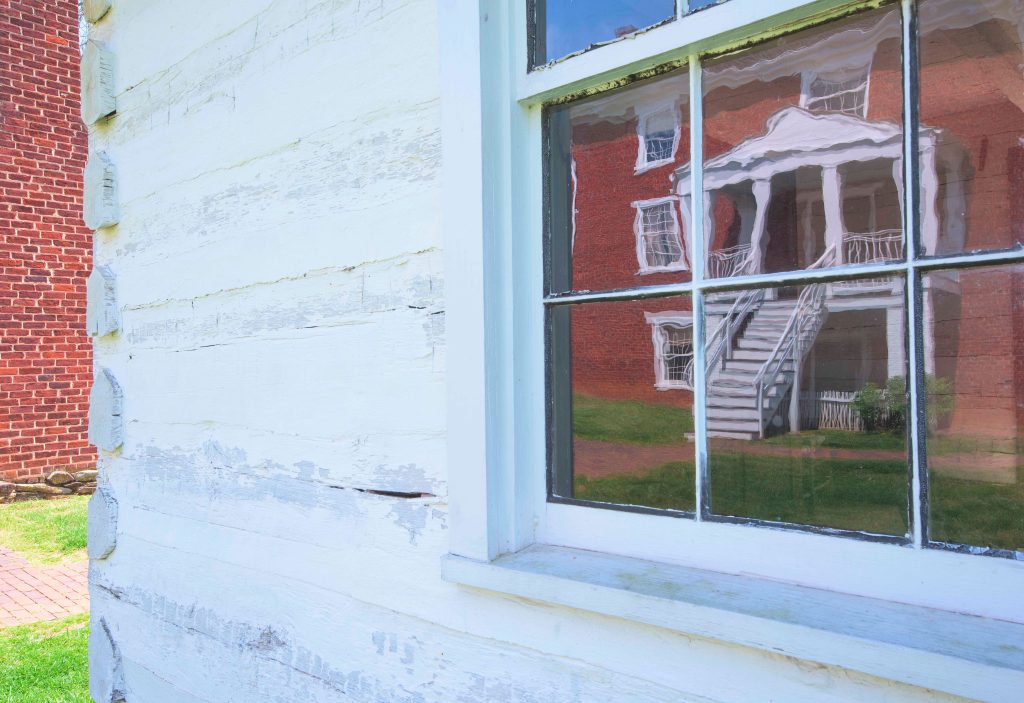A Thousand Words a Battle: Appomattox Court House
Appomattox Court House
April 9, 1865

It had been a grueling week for both armies. Since evacuating Richmond and Petersburg on April 3, just five days ago, the Army of Northern Virginia had covered 100 miles. General Robert E. Lee intended to move directly south and link up with the Army of Tennessee in upper North Carolina, but General U.S. Grant’s Union forces were pursuing doggedly.
It was a week of constant marching and fighting, with no time to rest, reorganize, or recuperate. By April 8, the Confederates found themselves at the village of Appomattox Court House, with Union troops closing in from three sides. Lee ordered an attack the next morning to clear the way for his army to keep moving.
Early on the morning of the 9th, the Second Corps moved out, through the village, and into the fields beyond to push back the Union troops blocking their way. Sergeant-Major Newsom Edward Jenkins of the 14th North Carolina recalled the final attack, withdrawal, and last stand made by his men.
General Cox’s Brigade was on the right of Gen. Grimes’ Division, and Gen. Roberts’ Cavalry on the right of Gen. Cox. The other troops were on the left of the Lynchburg road and in the forward movement. Gen. Cox moved forward by a left oblique, crossed the Lynchburg road, through an open field and came in contact with the enemy at the edge of some woods. Gen Cox ordered a charge and the brigade charged with the same vim and gallantry which characterized it at Spotsylvania.
In a few minutes, the command to Forward was given, and almost as soon as we commenced to advance, the Enemy picket line opened fire upon us, which quickened our lines into a charge, and we were driving their lines without a waiver, when the Enemy from our left opened a battery of artillery upon us firing right up our lines as we went across the open field. This quickened our line into a charge and the Enemy fled.
After this little brilliant success, and we had driven the Enemy a mile or more, we were ordered back. Cox’s Brigade had projected itself so far we were threatened by a flanking column of the Enemy or our left, as we came out. And there it was that the brigade was faced to the left while coming out and marching up to a fence on the top of the hill and under the command of General Cox, Ready-Aim-Fire-the whole maneuver was executed with the steady and accuracy of a brigade on review parade.
Gen. Cox later explained that Gen. Grimes had ordered a withdrawal, evidently knowing that an armistice had been agreed upon, but that he (Cox) did not realize it and chose to retire slowly, continuing to contest the field. Seeing the retreat, the Federal troops charged in an attempt to surround Cox’s men. However Cox, upon crossing a hill, ordered his men to turn about, and charge double-quick to the crest and rifle by brigade, then turn about again and rejoin the division. This the men did with precision. Rising with the famed “Rebel yell,” the maneuver was said to have been executed with the steady firmness of a dress parade, causing the enemy to fall back in surprise.
When we reached the road, all the troops had passed and we halted for our rear to come up and all get together. Gen. Cox then ordered me to take the 14th and 4th Regiments and hold the enemy in cheek until he could get his command to the rear, and send back some horses and have a battery of artillery moved which had been left in the road. I then advanced the two regiments down the road and formed a line of battle, the 4th on the right with its left resting on the road, and the 14th on the left and connecting with the 4th. We were soon hotly engaged and pressed back, and not wishing to lose all our men and colors, I went to the 4th and ordered them to fall back in good order, and then gave the 14th the same order. I then called for volunteers from the 14th Regiment to take position behind some houses (or barns) nearby and hold the enemy in check until the two regiments had gotten to the rear. About 25 of our men responded promptly and we soon opened a heavy fire and made a big racket so the Yankees did not know our strength.
On arriving back at or near the Courthouse a battery of artillery had been placed in position by our side, and Grime’s Division, or what was left of it, to protect this battery until the horses could be brought across the river to remove it. We held our line, Captain Jenkins being in command, until the artillery was removed and a flanking line of the Enemy threatened our position, and the front was doubling its lines and pressing us also. While the line was ordered to fall back, about twenty-five of us fell back behind an old house with the hopes of checking the advance until the others could escape. Just as we were ready for execution from this stand point, two officers rode by us, one in Blue uniform, the other in Gray, and told us to cease firing; that General Lee had surrendered.[1]
The North Carolinians fired some of the last shots of the last battle fought by the Army of Northern Virginia. The site is marked by a stone, a short walk west from the restored village of Appomattox Court House.
— Bert Dunkerly
[1] Pat Garber, Heart Like A River (Lynchburg, VA: Schroeder Publications, 2011), 115-117.
Great photo for a great article. Thanks